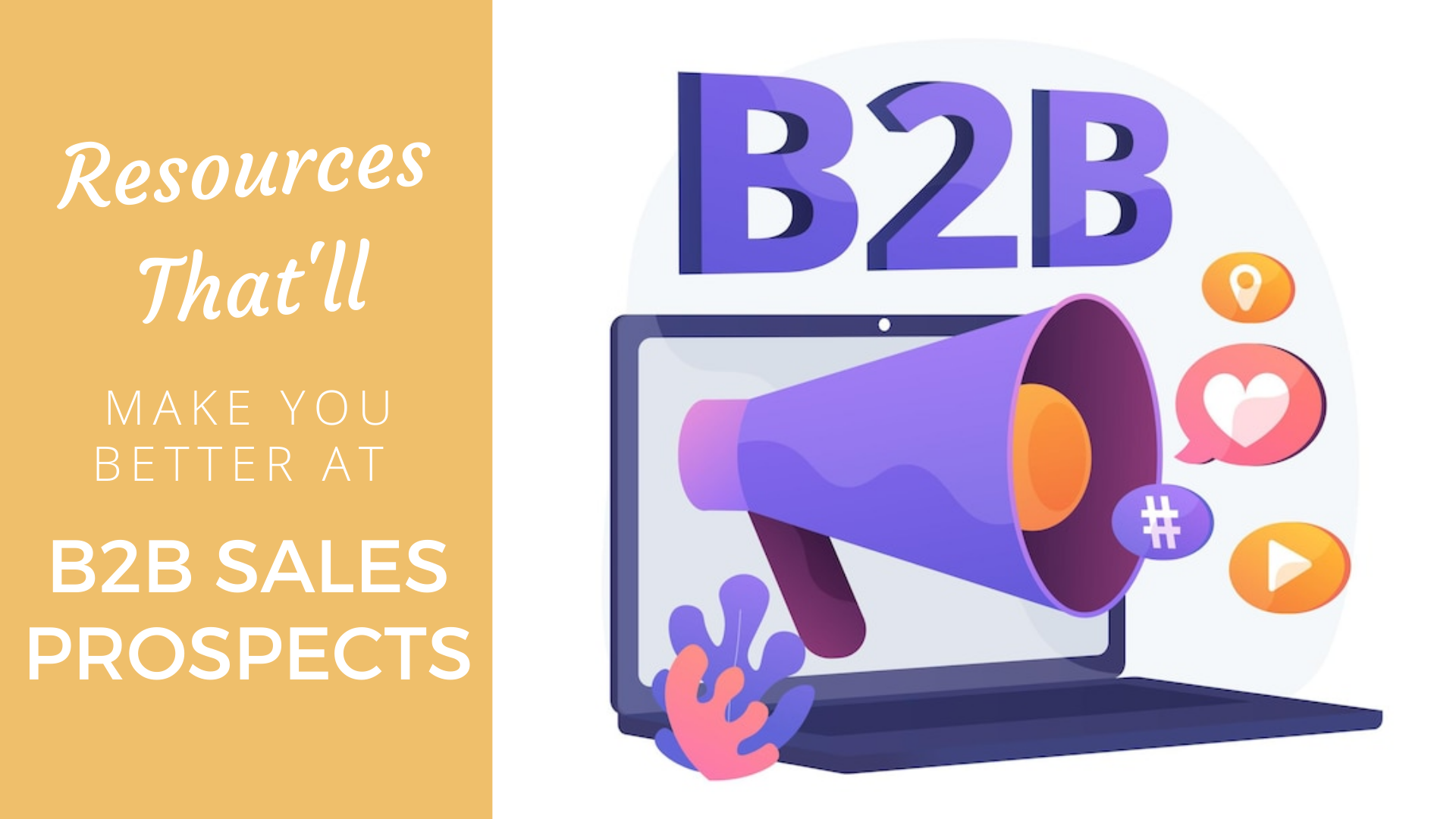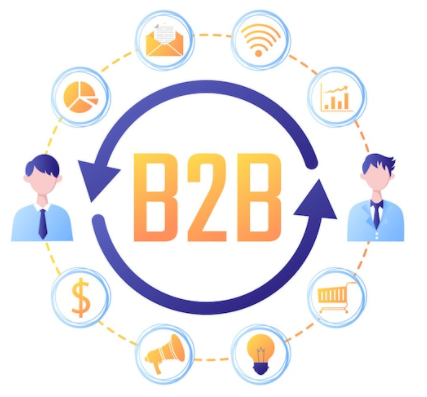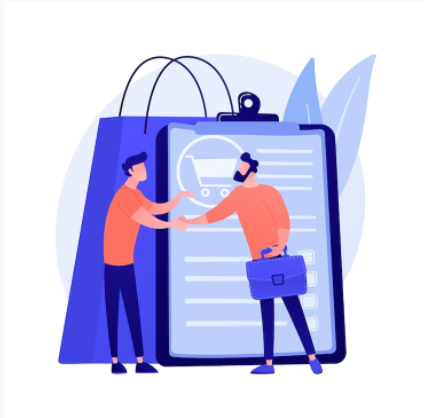You may become a better seller by learning how to prospect effectively! Take a look at the full thing to get a sense of B2B Sales Prospects.

Selling to business buyers is referred to as B2B sales prospecting. Become a better salesperson by mastering the art of prospecting!
Preparation for the sale of a product or service It's normal for sales professionals to find prospecting tedious, yet it's an essential part of selling for most firms.
It is crucial to have a strategy in place to find prospective customers, build an organization's sales pipeline, and set the stage for future sales interactions through b2b sales prospects.
We hope that this article will help you understand what prospecting is and how to enhance your B2B prospecting approach, regardless of whether you are a new salesperson or simply looking for a refresher course.
Let's go back to the beginning and begin. Prospecting for new business in the B2B sector is the process of identifying and contacting prospective customers, clients, or purchasers. In the end, your ultimate aim is to guide your customers through the sales funnel until they complete a purchase.
Effective prospecting strategy is tough to implement, despite the simplicity of the idea. In reality, data reveals that half of the time spent by salespeople on prospecting is ineffective ( source ). What if you didn't waste so much time? How much more selling would you be able to accomplish?
Continue reading if you want to improve your prospecting skills and increase the amount of time you spend selling. Six techniques to boost new business prospecting tactics are presented below.

1. Know who your best customers are
Unproductive B2B sales prospecting stems from a misunderstanding of the target audience. If you don't know who you're trying to sell to, how are you going to convince them to purchase from you? Simply stated, your sales attempts will be a failure if you do not have a thorough grasp of your intended audience.
While buyer personas are more often associated with marketing, they are as important in the sales process. Take a look at the data below (source): As opposed to companies who fail to meet their lead and revenue targets, companies that meet their goals are four times more likely to adopt personas for demand creation.
Segmenting your database by persona is used by 93% of firms that meet or exceed sales and lead targets.
Using buyer personas, 56% of businesses have been able to generate better-quality leads.
Personas have helped 36 percent of firms shorten sales cycles.
Using buyer personas, 24% of organisations saw an increase in new leads.
Using persona-based content to target cold leads is more successful than using persona-based content to target warm prospects (58 percent versus 45 percent).
Creating buyer personas should be the first step for your sales and marketing teams if they haven't already. Pay attention to who uses your product the most successfully. What are they? Why do people purchase? How does the customer go through the sales process?
Getting more particular with your sales prospect list allows you to go even more detailed.
2. Proactively and Consistently
You may put prospecting for new customers on the back burner when sales are sluggish but if you want a full pipeline, you must do it every day. Web-based chatbots may help.
"In the digital world, chatbots allow sales personnel to explore hyper-personalization while communicating with prospects proactively and regularly," explains Grant Jones, Sales Manager at Acquire.
As a consequence, customers will have a better overall experience. Even relying on tools or marketing teams is not enough; you must go out and locate new customers yourself.
You may want to establish daily prospecting targets for b2b sales prospects. How many cold calls per day should a salesperson be making for his or her company? What's the optimal number of emails to send? A lack of leads or income may be avoided by developing a technique and procedure for prospecting.
Check Klenty

3. Care for Your Friendships
No matter how well you prepare and how many individuals you approach, you're still going to get turned down. Keep going after those who say no to you, even when it hurts. Instead, devise a plan for nurturing these potential customers until they are ready to make a purchase.
In order to create a long-term connection with a potential customer, you must first understand why they rejected your offer. 'No' may signify 'not yet' in several cases. Take the time to figure out why your offering isn't a suitable match for the customer. Then, create a nurturing cadence to keep in touch with this potential customer. Instead of being intrusive, try to be helpful for b2b sales prospects.
4. Mastering Cold Calling: Best Practices in Cold Calling
Even if you despise making cold calls, they may be an efficient technique to get new clients. More than seventy-eight percent of decision-makers have scheduled or attended an event as a result of receiving a cold call. Please bear with us while we go through this in great depth. The following are a few basic tips to get you started.
Take the time to study. Knowing your customer through and out is essential before making a phone call. What kind of customer are they? What are some of the possible annoyances that they may encounter?
What particular problems do they have that you can help them with? How many of your rivals do they have a working relationship with Your ability to talk to the individual's desires and needs will improve based on the amount of information you have. As a result, there is a greater likelihood that they will not only remain on the phone, but that they will also arrange another meeting or buy anything.
Get off to a strong start. The fact that people don't want to be bothered or marketed to isn't a secret to anybody who has ever worked in sales. These obstacles may be broken down with a solid first impression, making the selling that more simpler.
By being honest about your objectives, speaking gently, and establishing your capacity to address their issues early, you may win over your potential customers. Make sure you're professional and treat your customers like people, not just statistics.
Start with a few minor objectives in mind. You have a limited likelihood of closing a deal on your first phone call. Instead, focus on a more manageable objective, such as having a second chat, sending a follow-up email, or scheduling a demo.
Sales pressure is relieved and your prospect becomes more comfortable with you when you focus on modest targets.

5. Take Time to Research and Select the Right Technology
When it comes to the success or failure of your sales organisation, technology might play a bigger role than you believe. Here's what we think: Invest in sales prospecting tools that are aligned with your plan. The opposite is true.
Buying tools and developing a strategy around them shifts the emphasis from the process to the technology. Modern sales tools, on the other hand, may significantly increase your prospecting efforts if you do your homework and seek advice from your team.
Check out the following categories of technology:
6. In order to keep things fresh, you need change things up a little
Get innovative with your sales prospecting methods, and don't be hesitant to experiment. What works for one prospect may not work for the next time you attempt to identify and convert a new lead. The best way to enhance your approach is to experiment with a variety of ways and see what works best for you.
Check Cognism
It is possible that a B2B prospect is a person or firm that meets your Ideal Customer Profile (ICP), but they have not yet indicated an interest in your business. Sales and marketing have the responsibility of introducing your product or service to B2B prospects and assisting them in making a purchase.
In B2B sales, there are two sorts of customers:
Prospects for sales
An organisation or individual who fits your ICP and is considered appropriate for further contact is referred to as a sales prospect.
Cold calling is the practice of making phone calls to potential customers who aren't already familiar with your product or service.
Outbound email refers to the practice of contacting potential customers through email.
"Social selling" is the practice of contacting potential customers using social media.
A "sales cadence" is a collection of several tactics that may be used to reach out to potential customers.
Prospects for marketing
You may sign up for a demo by clicking on a call to action (CTA) on your blog.
Form-filling on your company's online form.
A piece of material that you or your firm have created is being downloaded.
Clicking on a tracking link in one of your web advertising or promotional emails.
Professionals in sales and marketing are responsible for doing B2B prospecting. They may work alone, but they are more likely to do it in a group.
When sales and marketing work together closely, B2B prospecting is most successful. It's important to have a strong sense of alignment in order to succeed. A bigger revenue team may be formed by combining the two teams.
Sales
It is common for B2B sales teams to be divided into two segments. As a part of a larger sales strategy, each of these teams has a specific role to play.
Sales Development Representatives (SDRs) are in charge of locating potential customers, getting to know them, and setting up appointments with them.
There are a lot of people in this group, and they're all in charge of creating income for the company.
This strategy has a number of advantages, including:
Marketing
As a rule of thumb, there are three types of B2B prospectors out there. the subcategories are
This group is responsible for the acquisition channels of sponsored search and paid social, as well as the optimization of these channels. They are in charge of testing and optimising new growth channels.
Content marketers are in charge of coming up with ideas and then turning them into useful, authoritative content. Their goal is to provide content that sets the tone for the industry and generates a return on investment.
It is the job of campaign marketers to conduct multi-channel marketing operations, developing campaigns that promote consumer acquisition across a variety of media platforms.
The conviction that data and performance should be at the centre of decision-making is what binds these organisations together. They show a willingness to try new things in order to expand and engage their customers.

B2B prospecting may be greatly aided by the use of technology. Cold calling, outbound emails, social selling, and sales cadences may all be automated to save time and money for businesses. PPC, content marketing, and email marketing are just a few of the many forms of marketing that are technologically reliant. Prospecting in the B2B sector would be much more difficult if not impossible without the use of technology.
There are several ways in which technology may help in B2B prospecting. Insights gained from B2B prospecting tools are typically priceless for sales and marketing teams.
When it comes to B2B sales and marketing technology, there has been a substantial increase in recent years. There are now a wide range of B2B prospecting tools and solutions that may help with practically any assignment. Software as a service, or SaaS, is a popular delivery method for many of these technologies. There are also a number of effective free marketing and sales tools available.
Every firm needs a full pipeline, and the only way to get it is by regularly prospecting for new customers. There's no other option. Staying on top of your prospecting strategies is critical if you want to increase your sales.
Here we talked about every aspect of b2b sales prospect. We hope it will help you understand more clearly about b2b sales prospect.